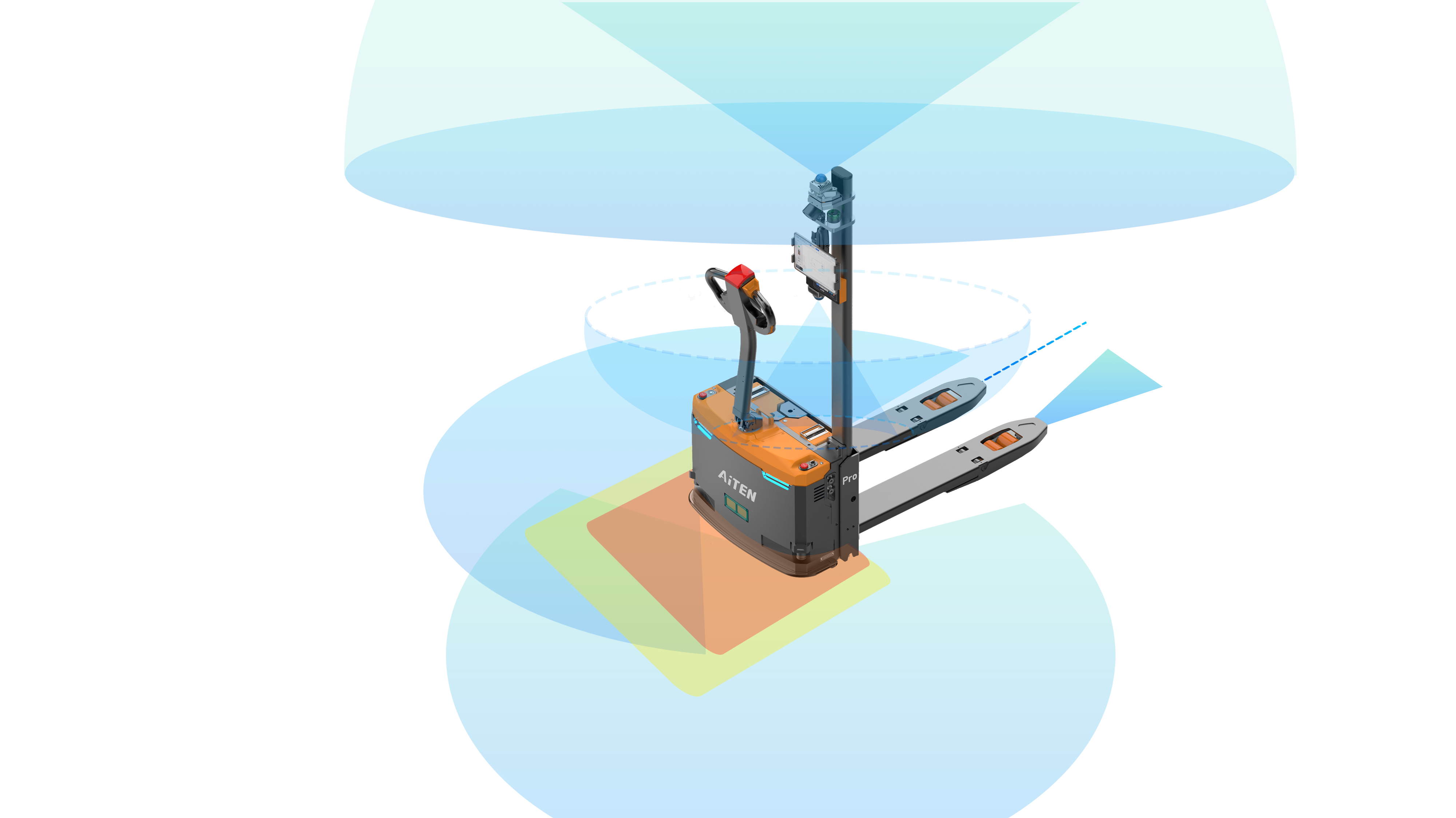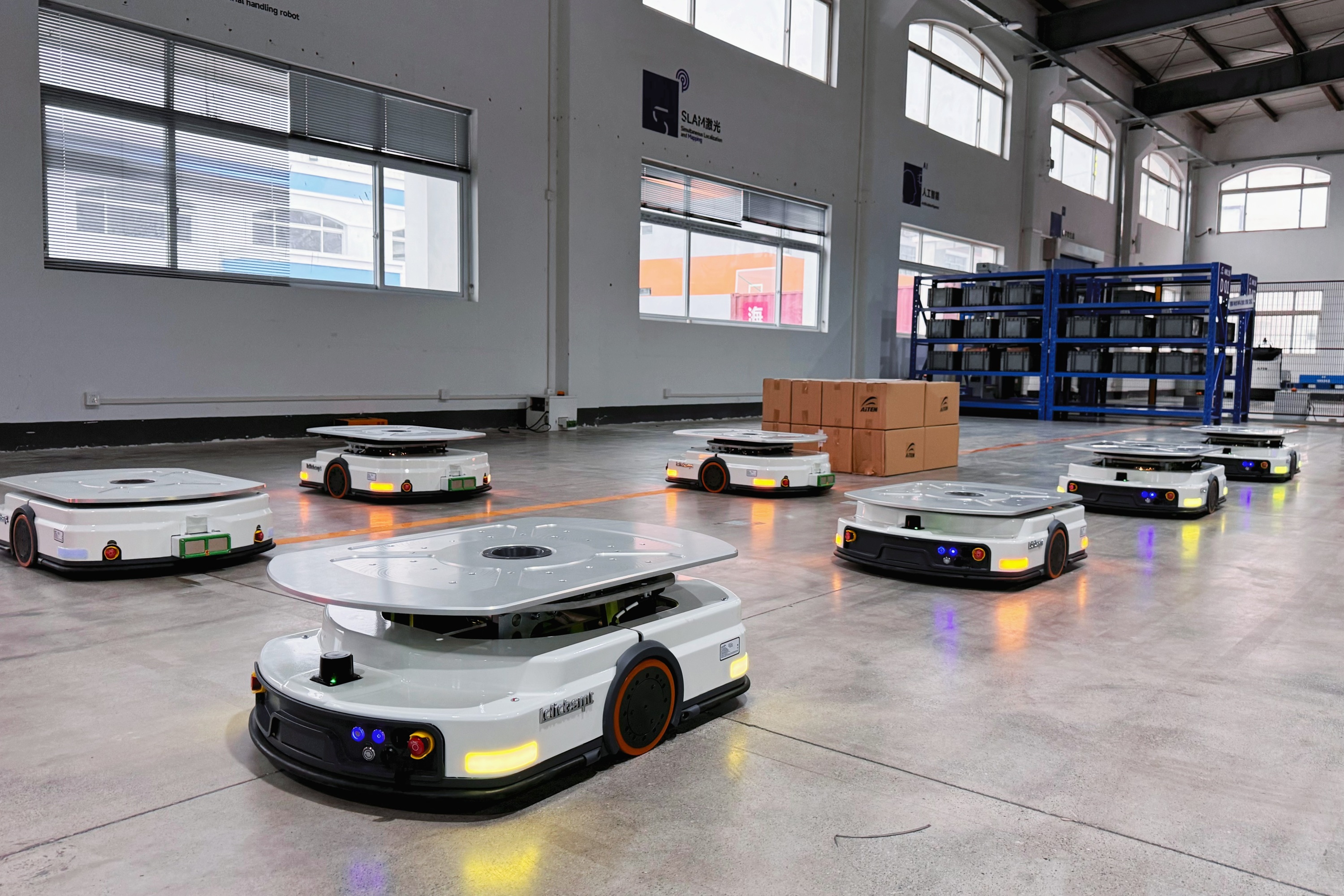What Are the Advantages of Using an Autonomous Forklift?

The Rise of the Autonomous Forklift
As industries move towards automation, the adoption of autonomous forklifts has gained significant traction. The global automated guided vehicle (AGV) and autonomous mobile robot (AMR) market was valued at $6.3 billion in 2022 and is projected to reach $13.2 billion by 2027, growing at a CAGR of 16.5%. This surge is driven by the need for efficiency, cost reduction, and enhanced safety in logistics and warehousing. Compared to traditional forklifts, autonomous forklifts leverage AI, IoT, and advanced navigation systems to revolutionize material handling.
Key Advantages of Autonomous Forklifts
1. Increased Operational Efficiency
One of the biggest advantages of autonomous forklifts is their ability to operate continuously. They don't need breaks like human operators do. For example, in a 24-hour logistics operation, an autonomous forklift can work throughout the day and night, moving pallets and goods without interruption, maximizing productivity.
They can also be programmed to optimize their routes. Advanced algorithms calculate the most efficient paths to pick up and deliver loads, reducing the time wasted in travelling between different points in a facility. In a large warehouse with a complex layout, this route optimization can result in a much faster movement of goods.
50% improvement in order fulfilment speed compared to manually operated forklifts (Source: McKinsey & Company).30% reduction in material transport time, leading to faster warehouse operations.
2. Reduced Labour Costs
With rising labour costs and a shortage of skilled workers, businesses are looking for automated solutions to reduce dependence on manual labour. According to the Bureau of Labor Statistics, labour costs in warehouse operations have increased by 20% in the past five years.
Autonomous forklift trucks can reduce the reliance on labour by reducing manpower operations, they also minimise the risk of damage to goods and equipment, thus reducing repair and replacement costs. Autonomous forklifts can cut labour expenses by up to 70%.
3. Enhanced Safety
Human error is a major cause of accidents in forklift operations. Automated forklift trucks minimise workplace accidents by reducing human error by 90%.
Autonomous forklifts are equipped with advanced sensors and AI algorithms that help them navigate safely, avoiding obstacles and reducing the risk of accidents. For instance, if a person walks in front of an autonomous forklift, its sensors will detect the presence and stop or change course to avoid a collision.
They follow pre-programmed safety protocols precisely. They can be set to maintain a safe speed and a safe distance from other vehicles, equipment, and workers at all times. This reduces the likelihood of accidents caused by speeding, improper turning, or other risky manoeuvres that might occur with human-operated forklifts.

4. Optimized Warehouse Management
Integration with Warehouse Management Systems (WMS) and Enterprise Resource Planning (ERP) systems allows autonomous forklifts to optimize storage and retrieval processes. Autonomous forklifts can be programmed to operate in tightly spaced environments, making better use of available space in warehouses and storage facilities.
Autonomous forklifts can position themselves with a high degree of accuracy. When it comes to stacking pallets, they can place them in a very precise manner. This is important for maximizing the use of warehouse space. For example, in a high-bay warehouse, accurate stacking can increase the storage capacity by ensuring that pallets are placed in an orderly and space-efficient way.
25% increase in warehouse space utilization by improving storage efficiency. Real-time tracking and automated inventory updates reduce stock discrepancies by 40%.

5. Data Collection And Analytics
These forklifts can collect a wealth of data during their operation, which can be analyzed to further optimize workflows, predict maintenance needs, and improve overall efficiency. This data includes information about the movement of goods, inventory levels (by tracking pallet movements), and the condition of the equipment itself.

6. Versatility Across Industries
Autonomous forklifts are not limited to warehouses; they are increasingly used in various industries, including:
- E-commerce & Retail Logistics: Faster fulfillment and restocking.
- Manufacturing: Streamlined production line material handling.
- Cold Chain & Food Logistics: Efficient operations in temperature-sensitive environments.
- Healthcare & Pharmaceuticals: Safe transport of medical supplies.
Future Trends in Autonomous Forklifts
The future of autonomous forklifts is promising, with continuous technological advancements:
- AI and Machine Learning Enhancements: Improved route optimization and predictive maintenance.
- 5G & IoT Connectivity: Real-time data sharing for seamless operations.
- Integration with Fully Automated Warehouses: The rise of "dark warehouses" with minimal human intervention.
Why Invest in Autonomous Forklifts?
Investing in autonomous forklifts is a strategic move for businesses aiming to enhance efficiency, reduce costs, and improve safety. As logistics automation continues to evolve, companies that embrace this technology will gain a competitive edge in the market.
- Autonomous forklifts improve efficiency by 50% and reduce material transport time by 30%.
- They cut labour costs by up to 70%, addressing labour shortages.
- Enhanced safety features reduce human error by 90%, decreasing workplace accidents.
- Integration with WMS and ERP systems optimizes warehouse management and inventory tracking.
As industries continue to move towards smart logistics, autonomous forklifts will play a crucial role in shaping the future of material handling and supply chain management.
If you have any additional questions or would like to learn more about AiTEN’s selection of robots, please contact us to set up an appointment with an AiTEN Robotics automation expert.
















.webp)







.webp)
.jpg)















